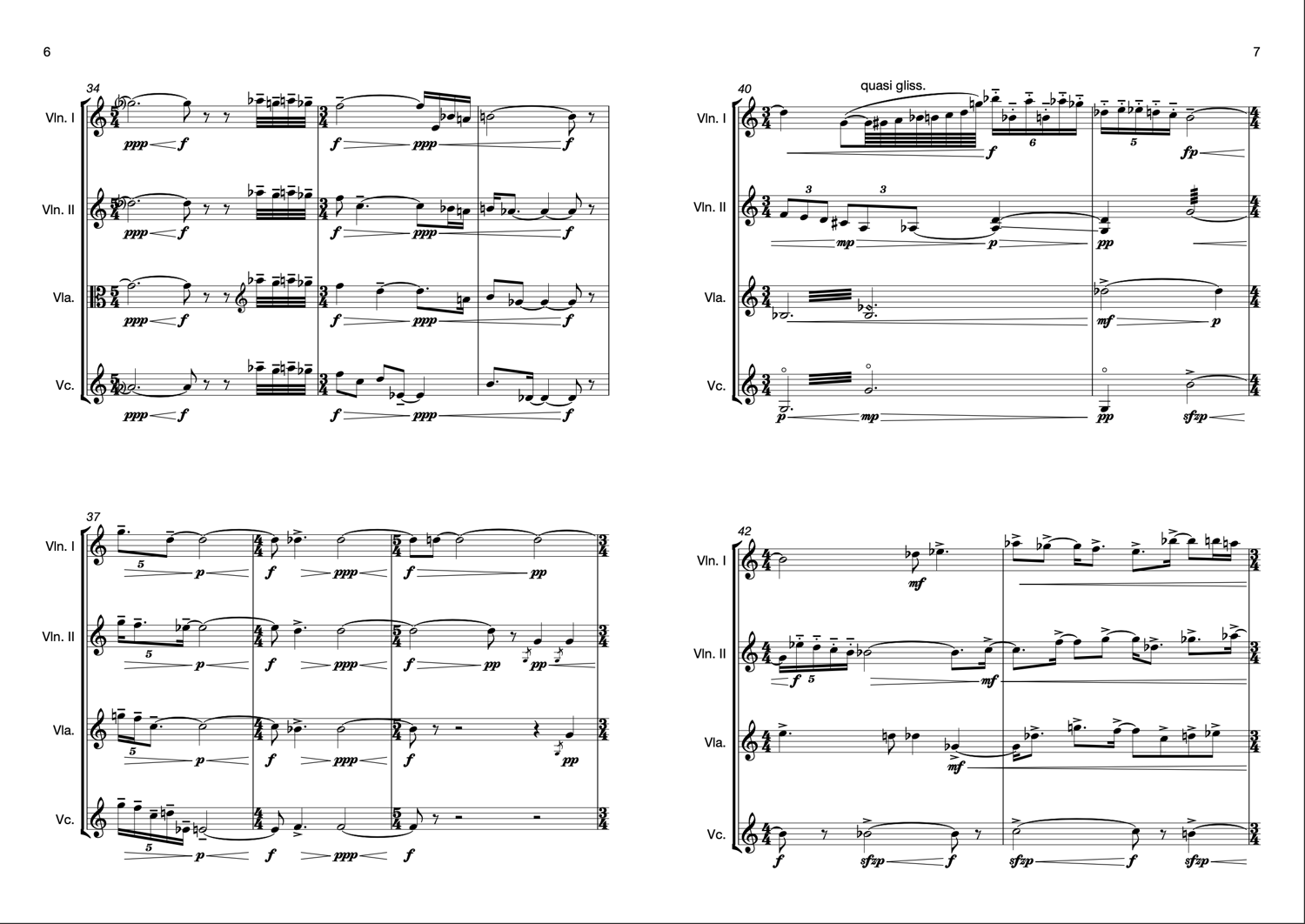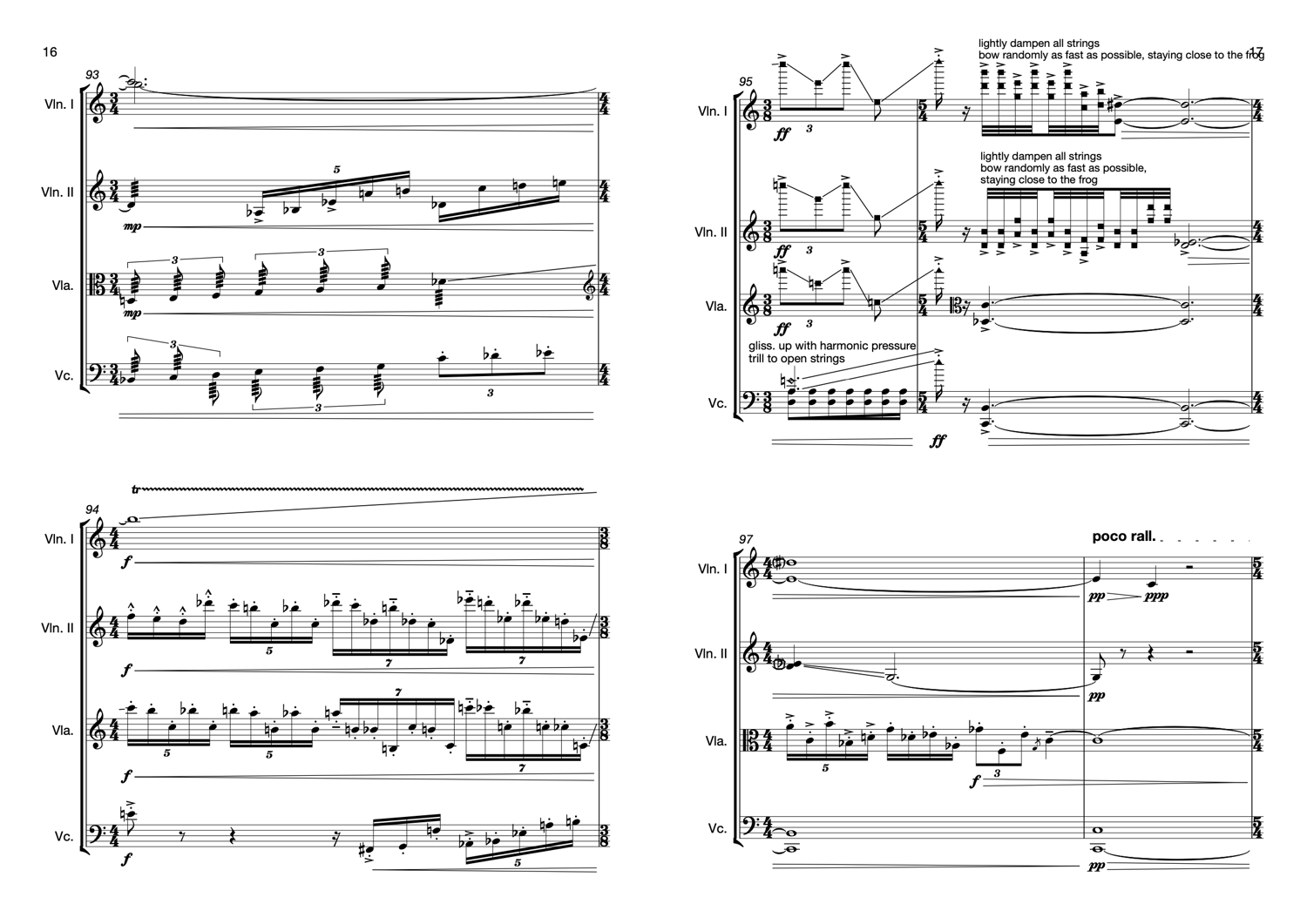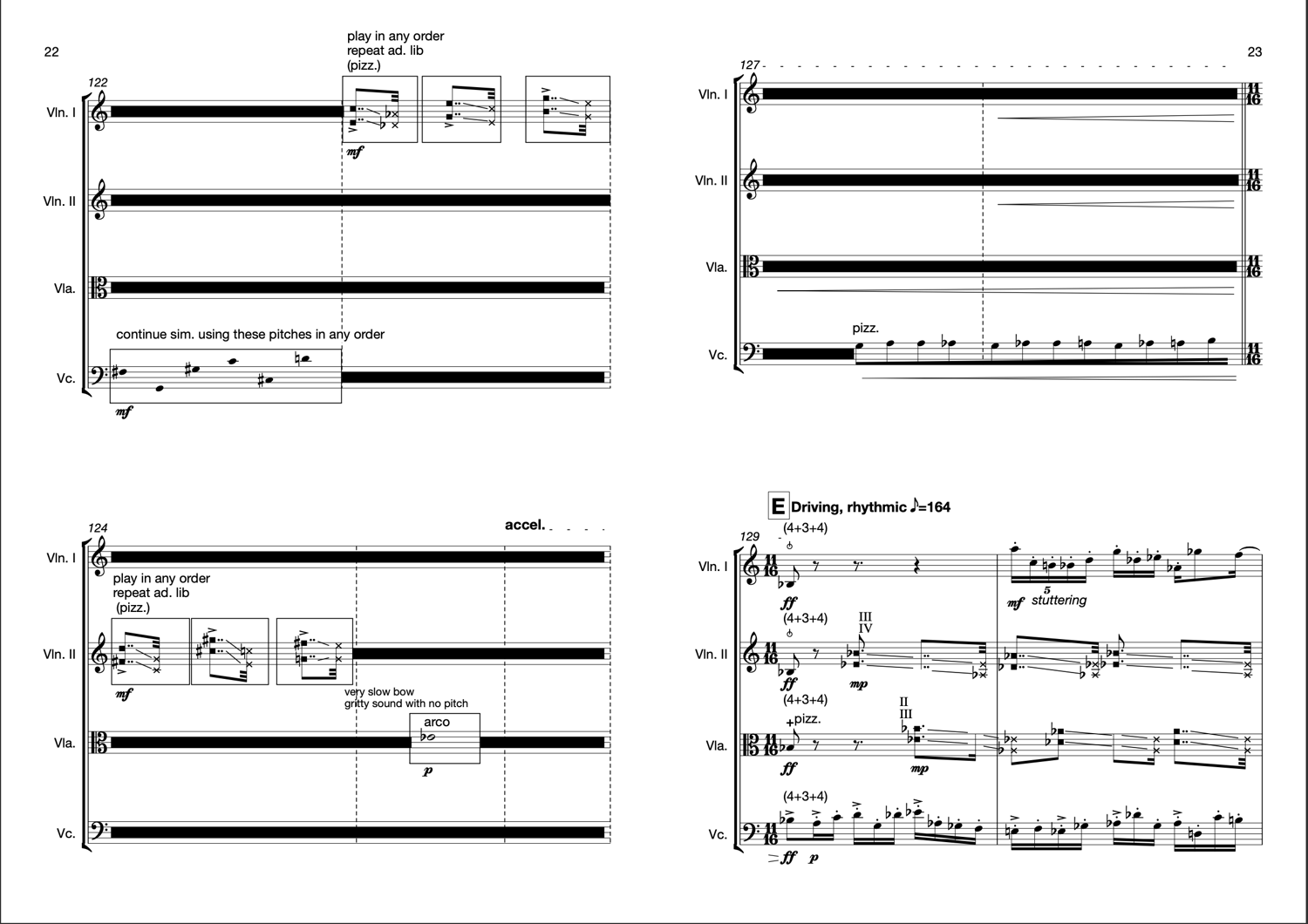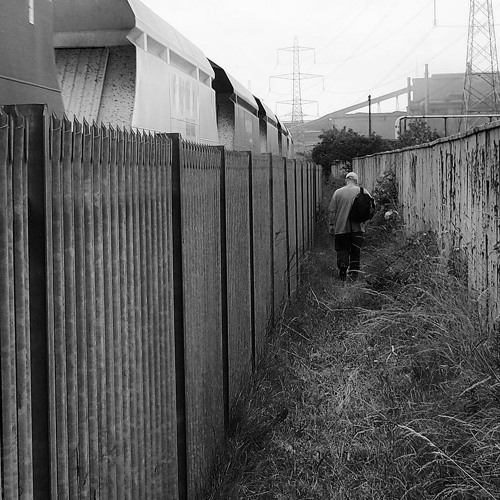The Black Path
On Sale
£999.99
for string quartet
The ‘Black Path’ is a track that follows the southern bank of the river Tees. It is ancient: in the late 5th century it formed the boundary between the Anglian Kingdoms of Deira and Bernicia. Later, when York was under Viking rule, the path marked the north-eastern corner of Eric Bloodaxe’s kingdom. For the last few decades, it has been a barren route through the abolished heart of industrial Teesside. Once used by sailors and steelworkers on their daily commute, it carves a scar between blast furnaces, cranes, and heavy pipelines, working steadily out from the town to the mouth of the Tees and Coatham marshes. Grimy steel slag, a by-product of the (now abandoned) steel works along the route was used for the foundations for the path. This slag, combined with the accumulation of industrial cinders underfoot, helped give the path its modern name. It’s an arresting and unique landscape, and I am regularly struck by its semi-wildness, as I drive above it on one of my own weekly commutes. An evocative image, it was the inspiration for this, my second string quartet.
The work is split into two movements. The first establishes a traditional score-as-absolute approach, where the performers adhere to a precisely notated, relatively traditionally designed score. The sense of momentum is largely controlled by pitch relationships, texture, and by shapes, gestures, and phrases. The performers’ role is simply to convey what they encounter; they are expressive, but always serving the music (and thereby, my intentions). In the second movement, the performers are given increasing amounts of control over the sense of musical energy, through improvisation, and control over the tempo, metre, and general flow of the music. Sometimes one performer takes charge, sometimes all four musicians carve their own path. Even when all four are once again adhering precisely to the score, the musical momentum is different. The original sense of energy has changed, and the listeners’ experience cannot be reset.
The ‘Black Path’ is a track that follows the southern bank of the river Tees. It is ancient: in the late 5th century it formed the boundary between the Anglian Kingdoms of Deira and Bernicia. Later, when York was under Viking rule, the path marked the north-eastern corner of Eric Bloodaxe’s kingdom. For the last few decades, it has been a barren route through the abolished heart of industrial Teesside. Once used by sailors and steelworkers on their daily commute, it carves a scar between blast furnaces, cranes, and heavy pipelines, working steadily out from the town to the mouth of the Tees and Coatham marshes. Grimy steel slag, a by-product of the (now abandoned) steel works along the route was used for the foundations for the path. This slag, combined with the accumulation of industrial cinders underfoot, helped give the path its modern name. It’s an arresting and unique landscape, and I am regularly struck by its semi-wildness, as I drive above it on one of my own weekly commutes. An evocative image, it was the inspiration for this, my second string quartet.
The work is split into two movements. The first establishes a traditional score-as-absolute approach, where the performers adhere to a precisely notated, relatively traditionally designed score. The sense of momentum is largely controlled by pitch relationships, texture, and by shapes, gestures, and phrases. The performers’ role is simply to convey what they encounter; they are expressive, but always serving the music (and thereby, my intentions). In the second movement, the performers are given increasing amounts of control over the sense of musical energy, through improvisation, and control over the tempo, metre, and general flow of the music. Sometimes one performer takes charge, sometimes all four musicians carve their own path. Even when all four are once again adhering precisely to the score, the musical momentum is different. The original sense of energy has changed, and the listeners’ experience cannot be reset.









